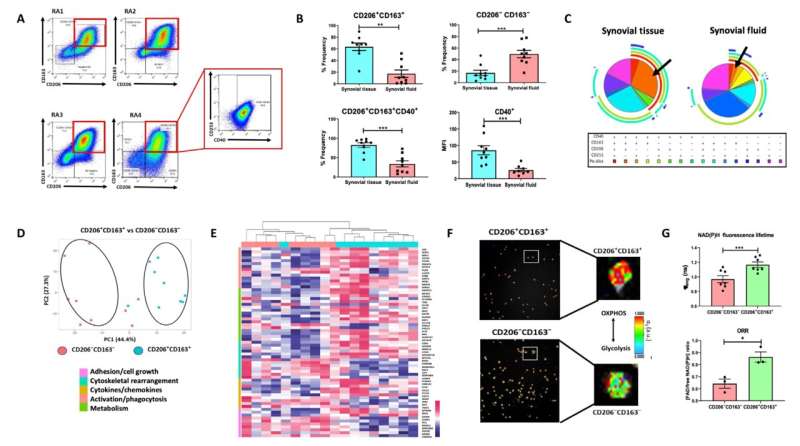
Currently, there are no cures for rheumatoid arthritis (RA), which affects 40,000 people in Ireland. The disease costs an estimated $22,000 per patient, per year with an overall cost to the health system of ~$608 million. Only 1 in 4 patients achieve remission and a significant proportion of patients have suboptimal responses or no response at all to current available therapies.
As it is impossible to predict who will develop severe, erosive disease and who will respond to treatment, a trial-and-error approach prevails, leading to potential irreversible joint damage before the patient has received the correct treatment.
Now, a study by researchers at Trinity College Dublin and St Vincent’s University Hospital proposes a better understanding of the site of inflammation in RA that will allow for the development of new treatment strategies or predictive biomarkers which could support the potential for a personalized medicine approach. The study is published in the journal Science Advances.
This work was led by Professor Ursula Fearon and Dr. Megan Hanlon from the Molecular Rheumatology Group in Trinity, and by Professor Douglas Veale, from St Vincent’s University Hospital.
The team performed an in-depth investigation of a specific population of cells: the macrophages that reside in the synovium of RA patients, individuals-at-risk of RA, and healthy controls. Researchers demonstrated, for the first time, the presence of a dominant macrophage subtype (CD40-expressing CD206+CD163+) in the inflamed RA synovium, which importantly was associated with disease-activity and treatment response.
The team identified that these cells are resident in the joint. In health, they play a protective role, but in disease—for reasons we are unsure of—they become pro-inflammatory, and release proteins called cytokines that induce inflammation and have the ability to activate the invasive fibroblast cell type, which leads to cartilage and bone destruction.
Researchers identified that the pro-inflammatory status of these macrophages is maintained by specific signaling and metabolic pathways within the joint, the targeting of which may induce resolution of inflammation. Importantly, the team identified that these changes in the macrophage status occurred pre-disease onset.
Combined, these findings identify the presence of an early pathogenic macrophage cell/gene signature that shapes the RA joint inflammatory environment and represents a unique opportunity for early diagnosis and therapeutic intervention.
More information:
Megan M. Hanlon et al, Loss of synovial tissue macrophage homeostasis precedes rheumatoid arthritis clinical onset, Science Advances (2024). DOI: 10.1126/sciadv.adj1252
Citation:
Study offers potential for early diagnosis and therapeutic intervention for rheumatoid arthritis (2024, September 26)
retrieved 26 September 2024
from https://medicalxpress.com/news/2024-09-potential-early-diagnosis-therapeutic-intervention.html
This document is subject to copyright. Apart from any fair dealing for the purpose of private study or research, no
part may be reproduced without the written permission. The content is provided for information purposes only.


